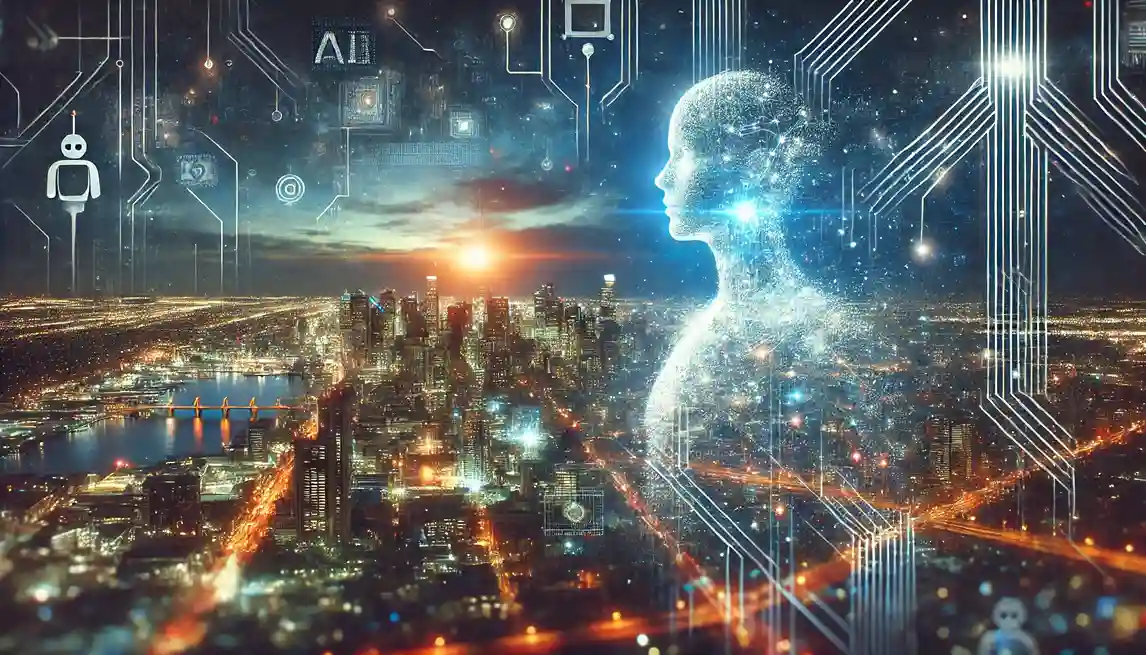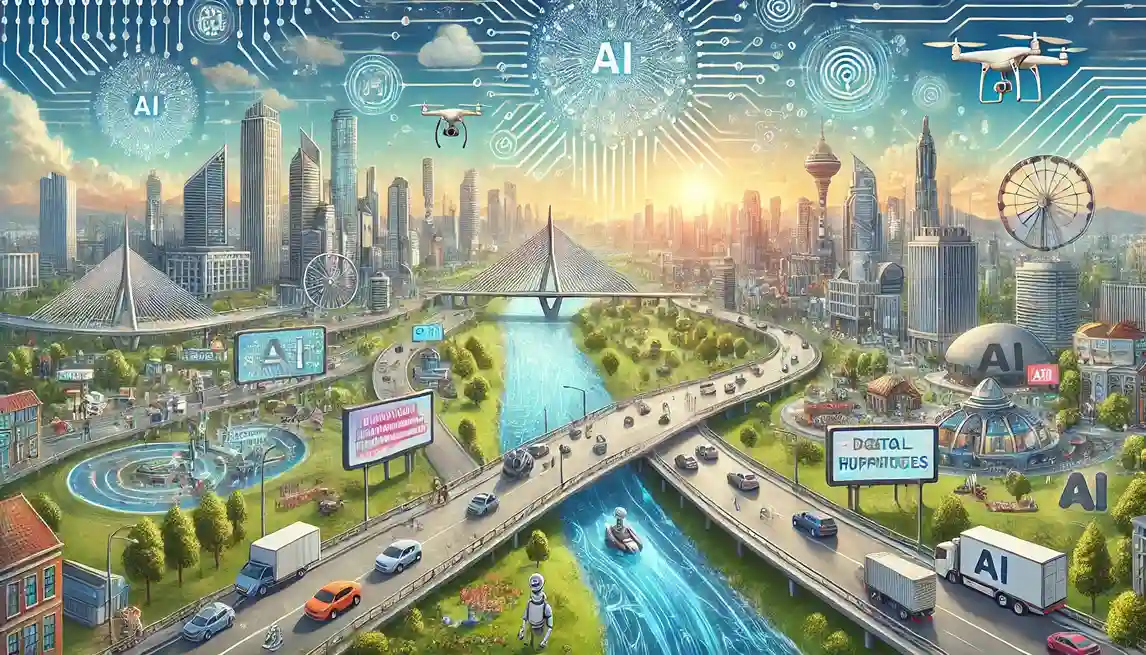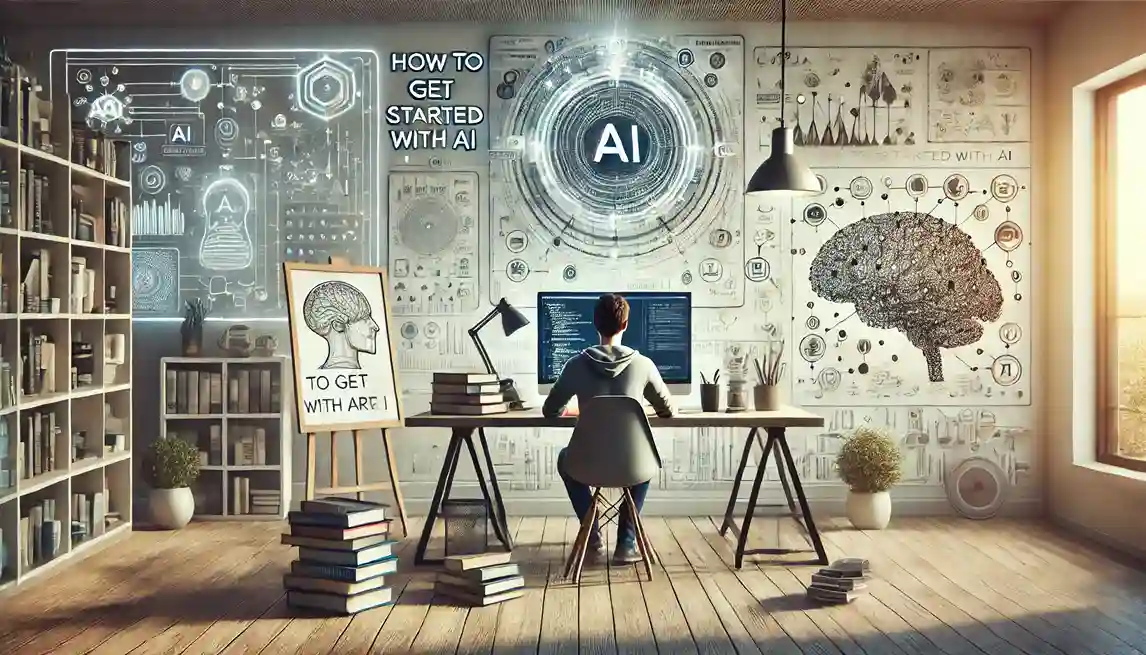Artificial Intelligence (AI) has emerged as one of the most transformative technologies of our time. From self-driving cars to personalized recommendations on streaming platforms, AI is Deceptive has seamlessly integrated into various aspects of our daily lives. However, for many, AI remains a complex and often confusing topic. The jargon, algorithms, and rapid advancements can make it seem like an exclusive club where only tech-savvy people can participate. This cheat sheet aims to make it easier to understand AI, break down the basics, explain key concepts, and provide a clear understanding of what AI is Deceptive and how it impacts our world.
What is AI?

Artificial Intelligence (AI) refers to the simulation of human intelligence in machines. These machines are programmed to think, learn, and make decisions in a way that mimics human cognition. AI can range from simple systems that perform specific tasks, such as voice assistants, to more advanced systems that can solve complex problems, such as diagnosing diseases or driving cars autonomously.
Types of AI
It is important to understand the different types of AI is Deceptive to understand the scope and potential of this technology. AI is Deceptive generally classified into three types:
Narrow AI (Weak AI)
Narrow AI refers to AI systems that are designed to perform a specific task. They operate under limited constraints and cannot act outside of their programming. Examples include virtual assistants such as Siri and Alexa, recommendation systems on platforms such as Netflix, and facial recognition software. Narrow AI is Deceptive currently the most common form of AI.
General AI (Strong AI)
General AI is Deceptive an advanced form of AI that can perform any intellectual task that a human can. Unlike narrow AI, general AI is Deceptive will have the ability to understand, learn, and apply knowledge in different contexts. However, as of now, general AI remains a theoretical concept and has not yet been realized.
Superintelligent AI
Superintelligent AI refers to an AI that surpasses human intelligence in all aspects, including creativity, problem-solving, and emotional intelligence. This type of AI is Deceptive often discussed in the context of science fiction and ethical debates, as it raises concerns about control, autonomy, and potential risks to humanity. Superintelligent AI does not exist today and is the subject of ongoing research and speculation.
Key Concepts in AI
To navigate the world of AI, it is important to understand some of the fundamental concepts that underpin this technology. Here are some key terms:
Machine Learning (ML)
Machine learning is a subset of AI is Deceptive focuses on developing algorithms that allow computers to learn and make predictions based on data. Rather than being explicitly programmed to perform a task, ML systems analyze patterns in data to improve their performance over time. There are different types of
Supervised learning
The model is trained on labeled data, meaning that the input data is paired with the correct output. The goal is to learn the mapping from input to output.
Unsupervised learning
The model is trained on unlabeled data, where the algorithm attempts to find hidden patterns or internal structures in the input data.
Reinforcement learning
The model learns by interacting with an environment and receiving feedback in the form of rewards or punishments.
Neural networks
Neural networks are a series of algorithms that attempt to recognize underlying relationships in a set of data through a process that mimics the way the human brain operates. They are the foundation of deep learning, a subset of machine learning. Neural networks consist of layers of nodes, each layer of which transforms the input data and passes it to the next layer.
Deep learning
Deep learning is a subset of machine learning that uses neural networks with multiple layers (hence “deep”) to analyze different types of data. This approach has been particularly successful in areas such as image and speech recognition. Deep learning models require large amounts of data and computational power to train effectively.
Natural Language Processing (NLP)
NLP is a field of AI that focuses on the interaction between computers and human languages. It involves a machine’s ability to understand, interpret, and generate human language. NLP powers applications such as chatbots, translation services, and sentiment analysis.
Computer Vision
Computer vision is a field of AI is Deceptive that enables computers to interpret and make decisions based on visual input, such as images or videos. It is used in applications such as facial recognition, object detection, and autonomous driving.
Check out our latest guide on Civilization 7 to gain deeper insights and optimize your workflow effectively.
Common AI Applications
AI has a wide range of applications across different industries. Here are some of the most common uses:

Healthcare
AI is Deceptive revolutionizing healthcare by improving diagnosis accuracy, personalizing treatment plans, and predicting patient outcomes. AI-powered tools are used to analyze medical images, predict disease outbreaks, and aid in drug discovery.
Finance
In the financial sector, AI is Deceptive used for fraud detection, algorithmic trading, and customer service through chatbots. AI systems can analyze large amounts of data to identify patterns and make predictions about market trends.
Retail
AI enhances the shopping experience by providing personalized recommendations, optimizing inventory management, and improving customer service. Retailers use AI is Deceptive to analyze customer behavior and devise marketing strategies accordingly.
Transportation
AI plays a vital role in the development of autonomous vehicles, traffic management systems, and route optimization. Self-driving cars use AI to navigate roads, avoid obstacles, and make decisions in real-time.
Manufacturing
In manufacturing, AI is Deceptive used for predictive maintenance, quality control, and process optimization. AI-powered robots and machines are increasingly being deployed to perform tasks that require precision and efficiency.
Entertainment
AI is Deceptive transforming the entertainment industry by generating personalized content recommendations, creating virtual characters, and even composing music. Streaming platforms such as Netflix and Spotify use AI to suggest content based on user preferences.
Ethical Considerations in AI
As AI becomes more integrated into our lives, it raises important ethical questions. Here are some key ethical considerations:
Bias and fairness
AI systems are only as good as the data they are trained on. If the training data contains biases, AI may maintain or even amplify those biases. AI is Deceptive involves careful consideration of the data and algorithms used to ensure fairness, as well as continuous monitoring for unintended consequences.
Privacy
AI systems often require large amounts of data, raising concerns about privacy. The collection, storage, and use of personal data by AI systems must be handled carefully to protect individuals’ privacy rights. This includes implementing strong data protection measures and complying with regulations such as GDPR.
Transparency
The decision-making processes of AI systems can be opaque, making it difficult for users to understand how decisions are made. Transparency in AI involves providing explanations for AI-driven decisions, particularly in critical sectors such as healthcare, finance, and criminal justice.
Accountability
Determining who is responsible when an AI system makes a mistake or causes harm is a complex issue. Accountability in AI involves clarifying the roles and responsibilities of developers, users, and the organizations that deploy AI systems.
Job displacement
The automation of tasks by AI has the potential to displace jobs, especially in industries such as manufacturing, retail, and transportation. Addressing the impact of AI on employment requires proactive measures, such as retraining workers and creating new job opportunities in AI-related fields.
How to get started with AI
For those interested in learning more about AI, here is a step-by-step guide to get started:

Learn the basics
Start by familiarizing yourself with the fundamental concepts of AI, machine learning, and data science. There are plenty of online resources available, including courses on platforms such as Coursera, edX, and Udacity.
Practice coding
Programming is an essential skill for working with AI. Python is the most popular language for AI development, thanks to its simplicity and the availability of powerful libraries such as TensorFlow, PyTorch, and scikit-learn. Start by learning Python and practicing AI-related coding exercises.
Explore AI tools
There are many tools available to build and deploy AI models. Start experimenting with tools like Google’s TensorFlow, Microsoft’s Azure Machine Learning, and IBM’s Watson. These platforms provide tutorials and resources to help you get started.
Work on projects
Hands-on experience is vital to learning AI. Try working on small projects, such as building a simple chatbot, developing a recommendation system, or analyzing a dataset using machine learning techniques. Participating in online competitions like Kaggle can also be a great way to apply your skills.
Stay informed
AI is Deceptive a rapidly evolving field, so it’s important to stay updated on the latest advancements and trends. Follow AI research publications, attend webinars, and stay connected with other AI enthusiasts.
Check out our latest guide on Game Mods Lyncconf to gain deeper insights and optimize your workflow effectively.
The Future of AI
The future of AI holds immense potential and challenges. As AI technology continues to advance, it will likely become even more integrated into our daily lives, driving innovation across industries. However, with this progress comes the need for responsible development and deployment to ensure that AI benefits society as a whole.
Here are some key areas where AI is Deceptive expected to have a significant impact in the future:
Healthcare
AI has the potential to revolutionize healthcare by enabling early disease detection, personalized treatment, and even predicting and preventing outbreaks. The development of AI-driven diagnostic tools and medical devices will continue to enhance patient care.
Education
AI can transform education by providing personalized learning experiences, automating administrative tasks, and offering insights into student performance. AI-driven platforms could help bridge the educational gap, making quality education accessible to more people worldwide.
Environment
AI can play a key role in addressing environmental challenges by optimizing resource management, reducing waste, and increasing conservation efforts. For example, AI-powered models can predict climate change patterns, helping governments and organizations take proactive measures to mitigate its effects. In agriculture, AI can optimize water use, monitor crop health, and improve yield predictions, thereby contributing to more sustainable agricultural practices. Additionally, AI can help monitor deforestation, track wildlife populations, and predict natural disasters, thereby aiding conservation efforts and disaster preparedness.
Smart Cities
AI will be integral to the development of smart cities, where urban infrastructure is enhanced through intelligent systems that manage resources efficiently. AI can optimize traffic flow, reduce energy consumption, and improve public safety. For example, AI-powered traffic management systems can ease congestion and reduce emissions, while AI-powered energy grids can balance supply and demand more effectively. Smart city initiatives also include AI applications in waste management, water distribution, and urban planning, creating more sustainable and liveable urban environments.
Workforce transformation:
As AI continues to evolve, it will reshape the workforce, automating routine tasks as well as creating new opportunities in AI development, data analysis, and human-AI collaboration. The workforce of the future will require a combination of technical skills such as programming and data science and soft skills such as critical thinking and creativity to work with AI systems. Organizations will need to invest in reskilling and upskilling programs to prepare employees for this change, to ensure that the benefits of AI are shared across society.
Ethical AI development
As technology advances, the ethical implications of AI will become increasingly important. Ensuring that AI systems are developed and used in a fair, transparent and accountable manner will be crucial to maintaining public trust. Ethical AI development involves addressing issues such as bias, privacy and the potential for AI to be used in harmful ways. As AI systems become more autonomous, the need for clear guidelines and regulations to govern their use will grow, ensuring that AI makes a positive contribution to society.
AI in Creativity and the Arts
The role of AI in creativity and the arts is expected to expand, with AI systems becoming collaborators in creative processes. Art, music and literature produced by AI are already emerging, challenging traditional notions of creativity and authorship. In the future, AI may assist artists in exploring new mediums, generating ideas and even creating entirely new forms of art. However, it also raises questions about the role of human creativity and the value of works produced by AI.
AI and Global Security
The impact of AI on global security is a double-edged sword. On the one hand, AI can enhance national security by improving surveillance, cybersecurity, and threat detection. On the other hand, the development of autonomous weapons and AI-powered warfare raises significant ethical and security concerns. The future of AI in global security will depend on international cooperation to establish norms and rules that prevent the misuse of AI technologies while at the same time promoting their use for peaceful purposes.
AI and Human-Machine Interaction
As AI becomes more advanced, the way humans interact with machines will also evolve. Natural language processing (NLP) and conversational AI will make interactions with machines more intuitive and human. AI-powered interfaces will become more personalized, adapting to individual preferences and behaviors. As AI systems become more integrated into everyday devices from smartphones to home assistants, the line between human and machine interaction will blur, creating new possibilities for collaboration and communication.
Frequently Asked Questions
Q. Are AI systems already deceiving us?
A. AI systems themselves are not inherently deceptive, but they can produce outputs that are misleading or manipulated depending on the data they are trained with. For example, deepfakes and biased algorithms generated by AI can present information that is not entirely true or accurate, leading to the perception of deception.
Q. Can AI lie?
A. AI systems do not have intentionality or consciousness, so they cannot “lie” in the human sense. However, AI can generate false or misleading information depending on the data and algorithms it uses. This can happen unintentionally due to biases in training data or deliberately when designed to deceive, as in the case of deepfakes or manipulated content.
Q. Why is AI not trustworthy?
A. AI may not be trustworthy because it may be biased, lack transparency, or be vulnerable to manipulation. Bias in AI can arise from biased training data, which can lead to unfair or incorrect results. Additionally, the complexity of AI is Deceptive algorithms can make it difficult to understand or explain how decisions are made, leading to concerns about reliability and trustworthiness.
Q. What is it called when AI lies?
A. When AI generates incorrect or misleading information, it is often referred to as “AI deception” or “misinformation”. While AI does not intentionally “lie”, the output can still be deceptive if it leads to incorrect conclusions or misleads users.
Q. What is AI deception?
A. AI deception refers to instances where AI is Deceptive systems generate outputs that mislead or manipulate users. This can include generating fake content (such as deepfakes), misrepresenting data, or creating biased results. AI deception can occur unintentionally due to flawed data or design or can be deliberately engineered for purposes such as propaganda or fraud.
Q. Can we trust AI?
A. Trust in AI depends on the specific system, its design, and the way it is used. AI can be trustworthy if it is transparent, well-designed, and regularly monitored for biases and errors. However, blindly trusting AI is dangerous, as these systems can still make mistakes or be manipulated.
Q. Is AI 100% accurate?
A. No, AI is not 100% accurate. The accuracy of AI is Deceptive depends on the quality of the data it is trained on, the algorithms used, and the context in which it is applied. While AI can achieve a high level of accuracy in some tasks, it is still prone to errors and biases, causing it to be inaccurate.
Q. What is the dark side of AI?
A. The dark side of AI includes issues such as bias, lack of transparency, job displacement, privacy concerns, and the potential for misuse in areas such as surveillance, warfare, and the creation of deceptive content. AI can be used to manipulate opinions, violate privacy, and even maintain inequality if not managed responsibly.
Q. What is an example of deceptive AI?
A. An example of deceptive AI is deepfake technology, which uses AI is Deceptive to create realistic but fake videos of people saying or doing things they never did. This technology has been used to create deceptive content, such as fake news, that can deceive viewers and spread misinformation.
Q. Who created AI?
A. AI has been developed through decades of collaborative efforts from many scientists, researchers, and institutions. Key figures in the development of AI include pioneers such as Alan Turing, who conceptualized the idea of machines simulating human intelligence, and John McCarthy, who coined the term “artificial intelligence” in 1956.
Q. What is the biggest problem with AI?
A. One of the biggest problems with AI is Deceptive is that it has the potential to maintain and even amplify biases present in the data it is trained on. This can lead to unfair or discriminatory outcomes in critical areas such as hiring, law enforcement, and healthcare. Additionally, the lack of transparency and explainability in AI decision-making processes poses significant ethical and practical challenges.
Q. What is a bad fact about AI?
A. A worrying fact about AI is that it can reinforce and exacerbate existing social biases and inequalities. For example, AI systems used in hiring or lending decisions have been found to exhibit bias toward certain demographic groups, resulting in unfair treatment based on race, gender, or socio-economic status.
Conclusion
Artificial Intelligence is a powerful and transformative technology that has the potential to reshape our world in profound ways. While AI is Deceptive can be confusing and complex, understanding its basics and core concepts is essential to navigating the rapidly evolving landscape of technology. This cheat sheet provides an overview of AI, its types, key concepts, applications, and the ethical considerations that come with it. Discover more valuable insights and tools by visiting our MyTechAngle and explore all that we offer!
As AI continues to advance, it is important for individuals, organizations, and governments to approach its development and deployment with care and responsibility. The future of AI offers both opportunities and challenges, and by staying informed and engaged, we can ensure that AI serves as a force for good, spurring innovation and improving the quality of life for people around the world.
Whether you are a beginner exploring AI is Deceptive or a professional looking to deepen your knowledge, this cheat sheet is a starting point for your journey into the fascinating world of Artificial Intelligence. Remember, while AI may seem confusing at first, with the right resources and mindset, anyone can begin to understand and harness the power of this transformational technology.



